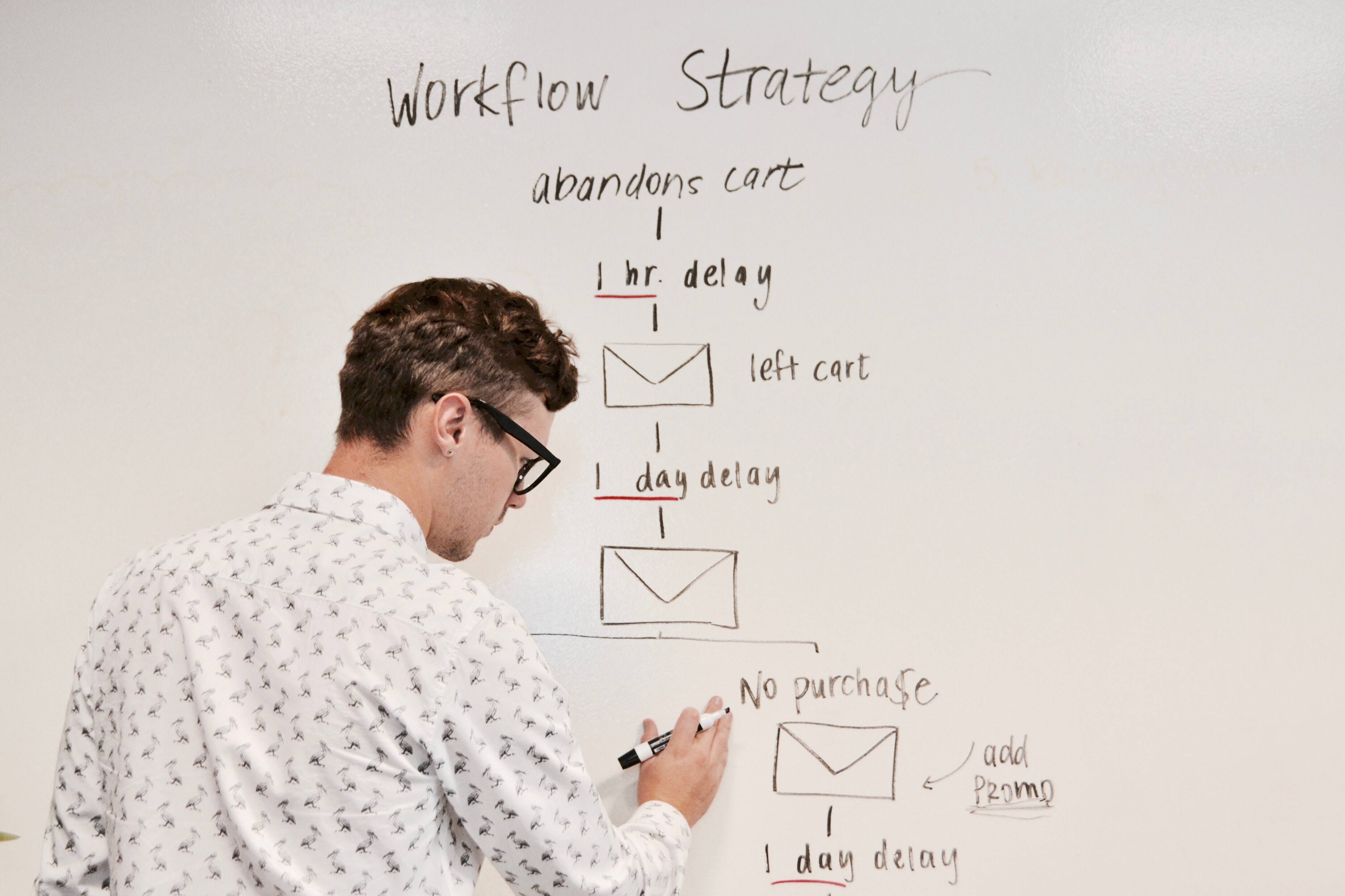How to Design Journey Orchestration Use Cases that Perform
by Marion Traa on 23.9.2020

In my work as a Solution Consultant I spend a lot of time helping our clients set up new use cases and improve existing ones. What I've noticed is that when businesses are just getting started with a journey orchestration platform like ours, there are so many new and exciting options for improving your customer journey, that figuring out where to start can be a little overwhelming.
You can suddenly do so much more than before, and it's tempting to want to try everything at once. I help teams rein it in. Together, we define possible cases, and then we focus on choosing the simplest use cases with the highest impact first.
In my experience, there are 5 essential steps to defining a successful use case. I share this so much with our customers that I probably recite it in my sleep! So, I thought it might be useful to share here on the blog with you. I hope you find these tips useful in creating amazing use cases that will impact your customer experience and your business performance.
1. Start with the end goal in mind
Before jumping into conversion types, take a step back and ask yourself how your use case/journey will contribute to achieving your business objectives. Make this as clear as possible from the very beginning. The most successful cases are often tied to a very high-level business goal and then trickle down to more specific department and team goals.
Common end goals could include:
- Increase revenue by x%
- Acquire x new customers in an x time period
- Increase brand awareness
- Increase upsells and cross-sells in a certain product group by x%
- Reduce ad spend by x% with same results
Goals could be categorized into either sales goals or brand awareness goals. Make sure you create SMART goals. Also determine if you want to reach that goal using your current customers, or through new customers.
2. Determine the metrics that support your goal
Of course, it's not very practical to work exclusively toward high-level goals, and that's why it's important to track key performance indicators. You'll want to think of a few useful metrics to look at regularly (daily, weekly, monthly and/or quarterly, depending on your timeframe).
I want to stress the importance of choosing metrics that will give you information that you can really use to optimize your efforts. In other words: avoid vanity metrics. Question your KPIs carefully — do they really tell you if you're reaching your goal, or are they just nice numbers to report to MT?
For example, does your number of social followers mean that your social media posts and ads are performing well, or would it be wiser to look at specific interactions with your posts, like comments and shares? Do your ad impressions really matter, or would it make more sense simply look at purchases made from traffic flowing in through a given ad campaign?
You can read more on this topic in our article on designing customer-centric KPIs.
Some useful KPIs to track include:
- Daily new visitors
- Average session duration
- Click-through rate
- Conversion rate
- Daily conversions
- Ad impressions
- Engagement metrics (likes, shares, etc.)
3. Link your use case to a hypothesis
Create a hypothesis that your use case needs to either reject or accept. Some examples from our customers include:
- We believe that personalizing this message will increase engagement
- We believe we can achieve the same results with fewer banners
- We believe that communicating earlier about upcoming contract expirations will increase renewals
Before diving into a use case set-up, you also want to get an estimate of the potential impact you can have, e.g. by looking at the size of a test-audience. An audience with 300 profiles might have a lot less impact than an audience size with 300,000 profiles. Critically look at your impact versus effort for every use case idea.
4. Set a realistic time frame
It's important to commit to a timeframe to reach your goal, as it helps you to track progress. Even if your use case is ‘’always on,’’ try to set a goal for where this use case should be in e.g. 3 or 6 months. Not only does this help you to track your progress, but also allows you to optimize your use case performance in a timely manner.
For instance: We believe that personalizing the messaging in this campaign will increase engagement by 10% in 3 months.
5. Focus your efforts
Determine the metric that matters most and focus your use case efforts around it. It might get tricky to juggle too many different efforts focused on different goal types. Put your use case efforts into achieving one goal at a time — this will help you move the needle on that more efficiently.
Practice makes perfect
The best way to come up with amazing use cases is to practice ideating them. I suggest setting aside an hour a week to brainstorm. Put your business goals out in front of you, and then write down as many hypotheses you can think of. Challenge yourself to think of at least 25 hypotheses, even if they're a little crazy. Out of those 25 you'll definitely have at least one that is golden.
Then practice breaking those down and attaching them to KPIs and timeframes. Over time, you'll create a really nice list of cases that are ready to be tried out — you can even go back and improve your backlogged cases based on learnings from the cases your team picks up.
This way of testing and improving is sure to have an amazing impact on your marketing, and it will help you become great at ideating and defining winning use cases.
If you'd like a nice way to map out, save and share your ideas, check out our online journey mapping tool!
You May Also Like
These Related Stories

Third-Party Cookies Webinar Q&A

How to Be Ready for the Impact of ITP/Cookieless World
.jpg)

.png?width=786&height=265&name=Relay42%20Demo%20Banner%20(1).png)